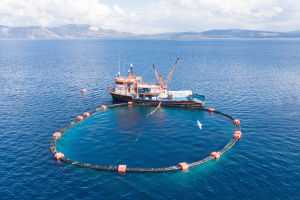The ocean is a shared space, not only belonging to us but also to those who enjoy yachting, fishing, swimming, and surfing, as well as those who make a living through boat transportation and fishing.
Mutual respect and consideration are crucial among sailors, forming the foundation of a good crew. Understanding fundamental principles is crucial when navigating the sea.
Maintain Control: It is vital to keep your boat under full control at all times. This ensures the safety of your crew and other vessels in the vicinity.
Offer Assistance: If you come across a boat in distress, always be ready to lend a helping hand. Assisting others in need is a fundamental duty at sea.
Be Aware of Surroundings: Pay attention to swimming and diving areas, steer clear of fishing nets, and avoid commercial routes. These precautions help prevent accidents and promote a harmonious coexistence with other maritime activities.
Prioritize Safety and Order: As a general rule, sailboats are granted navigational priority over powerboats. Nevertheless, in congested harbors, it is advisable for sailboats to exercise caution and yield to larger powerboats, promoting both courtesy and safety.
Safety Equipment:
A) Life Jackets: Life jackets, also known as personal flotation devices, are the most critical safety equipment at sea. It is crucial to wear a life jacket at all times. Choose a reliable and properly fitting life jacket that will not be dislodged if you fall overboard. Vibrant colors like yellow and orange increase visibility in the waves.
B) First Aid Hand Signals: Communication can be challenging amidst the sounds of waves, wind, and helm adjustments. Familiarize yourself with basic hand signals, such as "safe position," "approach point," "slow down," "spread sail," "reef the sails," "need help," and "fine." Mastering these signals will enhance safety and efficient communication while sailing.
Handling Unexpected Situations:
Extreme Temperatures: Be mindful of the effects of both cold and hot temperatures at sea. Improper clothing or prolonged exposure to cold water can lead to hypothermia, while the scorching summer sun can cause heatstroke. Both conditions pose significant threats to our well-being.
Hypothermia Symptoms:
Chills and shivering;
Impaired judgment;
Dizziness and lightheadedness;
Numbness;
Gradual loss of consciousness;
Weakness;
Dullness of the eyes.
Treatment:
Move the crew member with low body temperature to a warm place and assess their pulse and breathing.
Gently remove all wet clothing and wrap them in blankets or dry clothing to gradually warm their body, avoiding rapid temperature changes that could disturb the heart rate.
Once consciousness is regained, drink warm, non-alcoholic, non-caffeinated fluids.
Mild Heatstroke Symptoms:
Chills;
Pale skin;
Profuse sweating;
Headache;
Dizziness and lightheadedness;
Nausea;
Weakness.
Treatment:
Move the affected person to a moderate location.
Remove sweat-soaked clothing and loosen tight garments.
Cool them down with damp towels or sheets.
Use a fan to improve air circulation.
Offer small amounts of water every fifteen minutes.
Severe Heatstroke Symptoms:
Red, hot, irritable, or moist skin;
Gradual loss of consciousness;
Very high body temperature;
Vomiting;
Rapid and weak pulse;
Rapid and shallow breathing;
Severe heatstroke is life-threatening. Seek immediate medical assistance while taking these initial steps:
Move the individual to a cool place.
Cool their body with damp towels or sheets.
Smooth sailing is typically ensured through adequate preparation and precautions. While encountering extreme situations is rare, it is crucial not to panic if such circumstances arise. Instead, calmly follow the provided instructions to navigate through them effectively.


